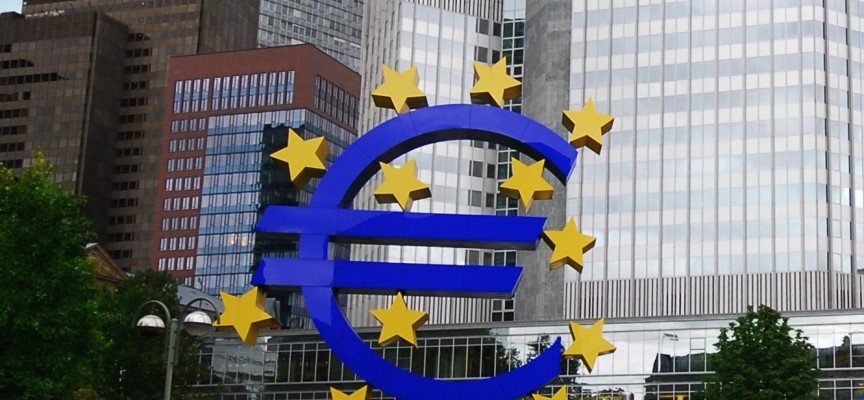Everything about the economy, and banks in particular, at this stage seems to divide more than unite Europe. The wounds of the financial crisis, that eventually infected the real economy, are extremely exposed, and – because of the obvious differences between individual countries – it is hard to find shared solutions in major economic policy choices facing Europe: whether it is about the Euro, the regulation of financial markets, or – still worse – the right mix between growth and rigor, positions are structurally distant from each other.
You just have to rely on the policy of small steps. And in this perspective, a good news is the launch by the European Parliament (now expiring its mandate) of the second leg of the banking union, the one concerning the rescue of European banks. The issue is extremely unpopular, because it involves one of the least popular institutions of the continent (the banks) and the inextricable connection with the sovereign risk of the individual countries (which condemns to a greater weakness the banks of the States which are considered less reliable), but eventually an agreement has been found. A minimum-wage type agreement, which is limited in scope and moves forward the moment of entry into force, but still an agreement: after 2016, it was decided, if in Europe there will be a bank close to failure, first a rescue “at home” will be tried, with the involvement of shareholders and creditors, then – if this proves to be insufficient – the intervention of a purposely set up European fund will be implemented, with contributions from all European banks (when it will be fully operational, in 2024, it will rely on an endowment of 54 billion Euro).
Behind what looks like a complex technicality, there is a very simple principle: in an emergency, first the individual States will take action, then – if this is not sufficient – Europe intervenes to prevent worse damages; it is the same logic that inspired the program of extraordinary purchase of government bonds launched by the ECB in summer two years ago, which had allowed us to find a solution to the sovereign debt crisis and bring back the spread between government bonds of different European countries to non-pathological levels.
Thanks to the second leg of the banking union (the first leg, i.e., transferring to the ECB the task of supervising large groups, will start in November), Europe now has an extra parachute in times of crisis. After the European elections, there will be work to be done with the third and final leg: the European guarantee on bank deposits. Another very delicate issue because it relates directly to the pockets of citizens, and provides that with the money of everyone the savings (in danger) of a few are protected. Another small but essential step, in order to compact Europe where the most dangerous cracks could open up: the economy.
Tutto ciò che riguarda l’economia, e le banche in particolare, in questa fase sembra più dividere che unire l’Europa. Le ferite della crisi finanziaria, che ha finito per contagiare l’economia reale, sono quanto mai aperte, e – a causa di evidenti disparità tra i singoli Paesi – si fatica a trovare soluzioni condivise nelle grandi scelte di politica economica che attendono l’Europa: che si parli di euro, di regolamentazione dei mercati finanziari, o peggio ancora del giusto mix tra crescita e rigore, le posizioni sono strutturalmente distanti.
Non resta che affidarsi alla politica dei piccoli passi. E in quest’ottica è una buona notizia il varo da parte del Parlamento europeo (ormai in scadenza di mandato) della seconda gamba dell’unione bancaria, quella relativa al salvataggio delle banche. Il tema è impopolare per eccellenza, perché di mezzo ci sono una delle istituzioni meno amate del continente (le banche, appunto) e il legame indissolubile con il rischio sovrano dei singoli paesi (che condanna a una maggior debolezza le banche degli Stati considerati meno affidabili), ma alla fine un accordo si è trovato. Un accordo da minimo sindacale, di portata limitata e che sposta in avanti nel tempo l’entrata in vigore, ma è pur sempre un accordo: dal 2016, si è deciso, se in Europa ci sarà una banca vicina al fallimento prima si tenterà il salvataggio “in casa”, con il coinvolgimento di azionisti e creditori, successivamente – se si rivelerà insufficiente – scatterà l’intervento di un Fondo europeo costituito ad hoc con i contributi di tutte le banche europee (a regime, nel 2024, conterà su una dotazione di 54 miliardi).
Dietro a quello che sembra un complesso tecnicismo, c’è un principio molto semplice: in caso di emergenza prima agiscono i singoli Stati, poi – se non basta – interviene l’Europa a evitare danni peggiori; è la stessa logica che ha ispirato il programma di acquisto straordinario di titoli di Stato varato dalla Bce nell’estate di due anni fa, che ha consentito di rimediare alla crisi dei debiti sovrani e di riportare gli spread tra i titoli di Stato dei diversi Paesi europei su livelli non patologici.
Con la seconda gamba dell’unione bancaria (la prima, cioè il trasferimento alla Bce della vigilanza sui grandi gruppi, scatterà a novembre), l’Europa adesso dispone di un paracadute in più in caso di crisi. Passate le elezioni europee, ci sarà da lavorare alla terza e ultima gamba: la garanzia europea sui depositi bancari. Altro tema delicatissimo, perché riguarda direttamente le tasche dei cittadini, e prevede che con i soldi di tutti si tutelino i risparmi (in pericolo) di qualcuno. Un altro piccolo passo, fondamentale, per compattare l’Europa là dove si possono aprire le crepe più pericolose: l’economia.
Marco Ferrando
Latest posts by Marco Ferrando (see all)
- A Parachute for the Economy - 18 aprile 2014











